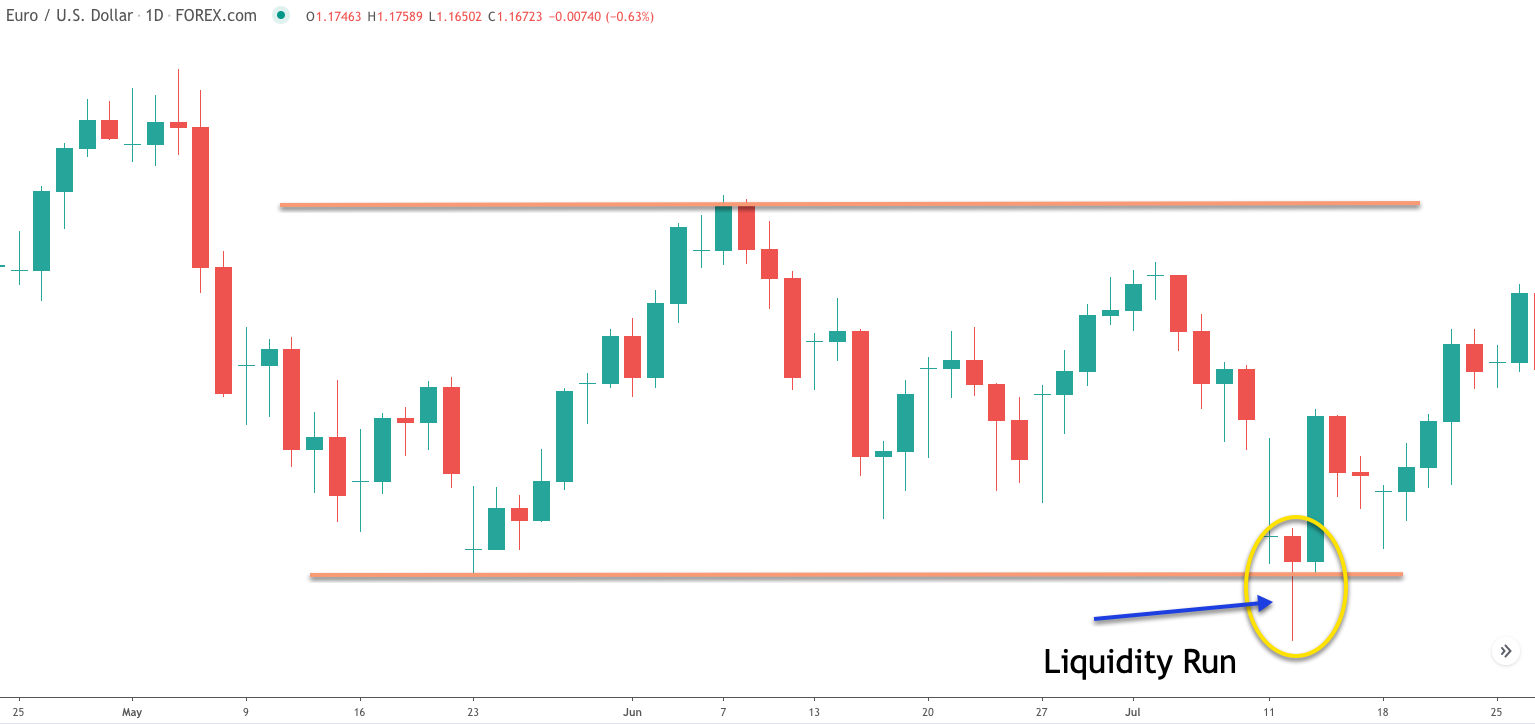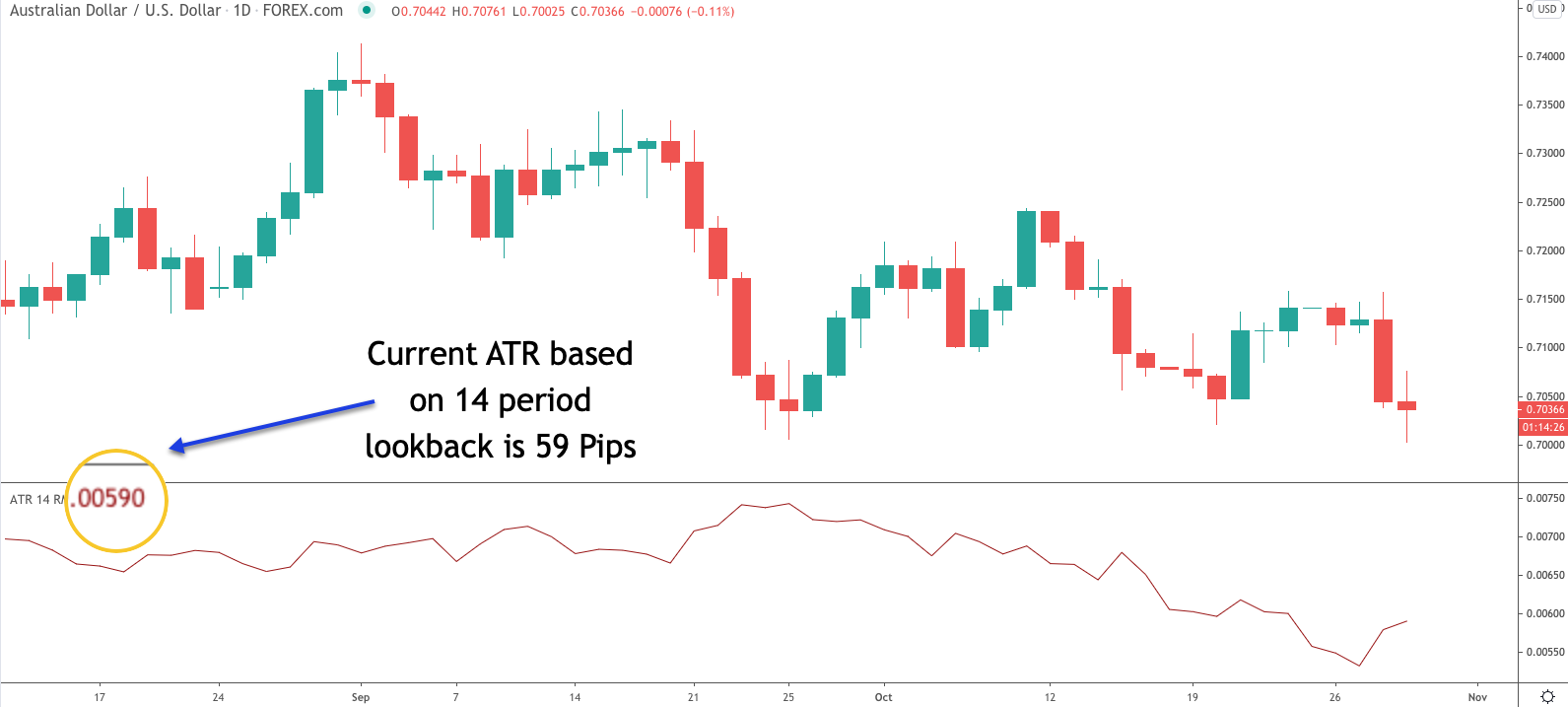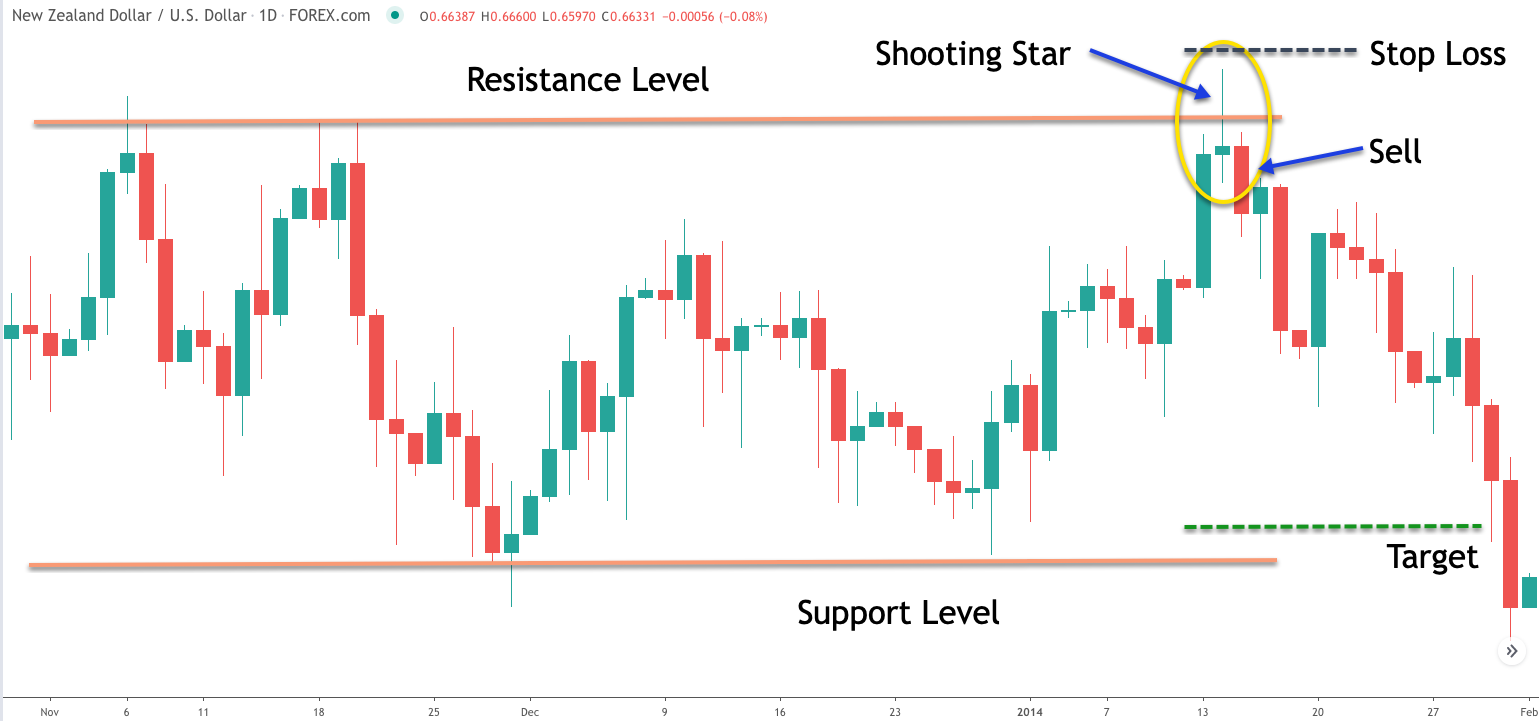For a typical Forex trader, there is no feeling more depressing than getting stopped out of their trade. Worse yet, when the market takes off in your direction immediately after your stop gets triggered, this can be especially challenging on the psyche.
Many currency traders believe that either their broker or some other outside force may be drawing prices towards their stop levels. We will try to unpack some of these trading myths, and provide some direction on how to reduce the frequency of getting stopped out.
What is Forex Stop Hunting?
One of the more widely circulated conspiracies within the Forex market is the idea of stoploss hunting. Most traders have experienced what they believe to be a stoploss hunting expedition on the part of their forex broker, other professional traders, or some other force within the market. For those that may not be completely familiar with the concept of stoploss hunting, let’s take a moment to try to define it in simple terms.
The phenomena of stoploss hunting describes a scenario wherein you have entered into a position and set your stoploss price. Some point afterwards, the price trades directly into your stoploss level, taking you out of the trade. Then almost immediately afterwards the price reverses and moves in your intended direction.
Anyone who has experienced this can vouch for how frustrating it can be when this happens on a trade. And the worst part of it is that this type of activity is not a one-off event, but rather something that happens quite frequently within the financial markets, particularly the spot forex market.
As a result, it makes traders wonder whether they are simply a victim of bad luck, or whether something more sinister may be occurring within the markets they trade. The common sentiment among Forex traders is that these stop gunning activities are done by their brokerage firms, who may be taking the other side of their clients order flow. Later on, we will be diving into whether this is a reasonable concern or merely a blown up myth within Forex circles.
So why would any market players engage in stop gunning activities? Well, if you understand the concept of market liquidity it will help illuminate why these types of events occur. Unlike most retail traders who are only trading relatively small size, larger market players, such as hedge funds, institutions, and proprietary trading desks rely on large pockets of liquidity in order to efficiently get in and out of the market.
As such, these “smart money” players are routinely scanning the market for areas of liquidity which they can tap into to help fill their order flow. These participants are very familiar with where and how most retail traders place their stoploss orders. As such, they may seek to temporarily move the markets in an attempt to find the needed liquidity to offset their true market positioning.
Now, many people view this type of activity by any market participant as market manipulation. However, you should realize that there is no collective concerted effort to ensure that your position ends up in the red. Instead you should take the time to start gaining a deeper understanding of the mechanics behind such market movements.
When you’re able to place yourself in the shoes of the big players that have the ability to move markets, you can better understand why these types of plays occur. And more importantly, you will learn how to avoid being a victim of these stop loss hunts, or liquidity runs, as the professionals call them.

Do Dealing Brokers Target Stop Losses?
The vast majority of dealing Forex brokers in the industry do not hunt your stop loss or engage in lifting your stops. Having said that, there may be some unscrupulous brokers that may engage in unfairly triggering your stop loss orders. As such, it’s imperative that you work with a reputable Forex broker, and one that is regulated by a government body. This will be your best protection against unethical trading practices that may occur at some smaller unregulated bucket shops.
For the overwhelming number of regulated brokers, it’s simply not worth the risk of engaging in such deceitful practices, as it could lead to large penalties and even the loss of their license. And not to mention their reputational damage in the industry. And so, the short answer to whether your broker is intentionally gunning for your stops, would be a resounding no in the vast majority of cases.
Now from time to time it may feel as if your dealing broker is targeting your stop loss or manipulating their spreads. Often, there is a plausible reason for this, but in the heat of the moment, we may feel that there is some grand conspiracy working against us in the market. And it’s the Forex broker that bears the brunt of this frustration from clients.
As we’ve noted earlier, what may appear as market manipulation and stoploss hunting, is actually a liquidity run initiated by smart money in an attempt to get their orders filled. This is a more prevalent and plausible scenario that you should be focused on instead of putting the blame on your Forex broker.
We obviously want to take the necessary steps to ensure that we are not falling victim to liquidity runs by the smart money players, but in the same token, we have to also take responsibility for our actions in the market.
Many times, it’s much easier to project blame onto others including our broker, other market participants, or some other mysterious force, then it is to look introspectively and judge our own shortcomings in the market. You want to get past the blame game, and build a framework for placing your stop loss orders safely away from liquidity zones.
With any type of new knowledge, first you have to understand the underlying logic. Only once you have done that and accepted it can you move towards utilizing that newfound knowledge to your advantage. You have now come to realize that the real threat to your stop loss is not your Forex broker gunning for them, but rather the result of the inner workings of certain market participants themselves. Let’s now take that base of knowledge and see how we might be able to protect ourselves from falling victim to these types of market runs.
How To Avoid Stop Hunting In Forex
As traders we know that one of the best protections that we have is trading with a stop loss. But what are some of the ways that you we can avoid falling into the stop loss hunting trap? Fortunately, there are some techniques that you can incorporate into your trading that will help minimize these occurrences.
Let’s go through a few best practices that you can start using right now.
Use the ATR Indicator – The ATR indicator, which is short for Average True Range is a volatility based indicator. It is very useful in helping to gauge the current market volatility. We can use this indicator in helping us better evaluate the optimal stoploss placement.
Essentially, the ATR indicator will provide us a reading of the market’s average trading range. We would take a multiple of the ATR reading and use that to measure the stop loss distance from the entry point. For example, if the current ATR reading on the daily chart of EURUSD currency pair is 100 pips, then we might set our stoploss at a 1.5 times factor of this range. As such, in this case our stoploss would be placed at 150 pips away from the entry point.
Below is an example of the ATR indicator plotted along the lower pane of the daily price chart of AUDUSD.

Avoid Obvious Areas – The more obvious a support or resistance level appears on the chart, the more likely it is to be used as a manipulation zone for liquidity runs. Keep in mind, if you see an area which looks perfect for setting your stop loss, other traders are also very likely thinking the same thing. And as such, these traders will also add to the stoploss order flow in that area. Smart players who are seeking liquidity in the market can sniff out these types of orders very quickly and efficiently.
These stop losses create a pool of liquidity that they can exploit. Therefore, it’s important to try to place your stoploss at levels that are not easy to locate. We don’t want to aggregate our orders with the retail public. Instead, it’s much safer to use a slightly wider stoploss that extends beyond those obvious stop loss placement levels.
Use Multiple Stop Losses – Scaling out of your positions is a technique that many professional traders tend to engage in. Most retail traders however have an all in entry strategy and all out exit strategy. Although this works fine in many cases, you may see an improvement in your win rate by breaking up your stop loss orders and scaling out of your trades. This is certainly an exit strategy that is worth testing. It can reduce the risk of being taken during the stop run since your stoploss orders are spread out over different levels.
Spotting Rejection Zones – Stop running is most prevalent near clear support and resistance levels. As such, we will sometimes see that what appears to be a clear upside break out from a resistance level fails to materialize, and quickly rejects downward. And conversely, we will see what appears to be a clear downside break out from a support level fail to follow through, and leads to a fake out bringing prices back higher.
On the candlestick chart, this rejection activity forms very specific candlestick patterns such as a shooting star or bearish engulfing pattern in the case of a failed upside breakout, and a hammer pattern or bullish engulfing pattern in the case of a failed downside break out. It’s important to watch for these types of reversal candlestick patterns for signs of potential market manipulation.
Forex Stop Hunt Strategy
Now that you understand the underlying psychology behind stop running activity, you can take steps to protect yourself from these price moves that can adversely affect your position. Additionally, once you recognize what the stop gunning patterns appear like on the price chart, you can build a framework for joining the Smart Money, and take advantage of these swings. When you’re able to do that, you’ll no longer feel frustrated by what appears to be an effort to take out obvious stoploss levels, and instead you’ll be able to profit from recognizing these patterns.
You have to start putting yourself in the shoes of the large institutions and big-money players. These institutional outfits are continually in the search for pockets of liquidity in order to fill their desired positions in the market. Smart money players are looking to shake out weak hands, particularly around easily recognizable support and resistance levels that are being widely watched.
So let’s build a stop loss hunting strategy that allows you to join in these types of shakeouts. This mean reversion technique will incorporate the support and resistance levels within the rectangle chart pattern, along a few key major candlestick reversal patterns. This forex stop loss gunning strategy below works best on the daily timeframe.
Below are the rules for identifying and trading a bullish set up:
- Look for an obvious support level within a defined rectangle range.
- Wait for a breakout below the support level, and allow the candle to close.
- If the breakout candle appears as a hammer pattern, with a strong lower wick, we will prepare for a potential long entry.
- The entry to buy will be set at 1 pip above the high of the hammer candle.
- The stop loss will be placed below the low of the hammer candle.
- The target will be placed near the upper extreme of the rectangle’s range.
Below are the rules for identifying and trading a bearish set up:
- Look for an obvious resistance level within a defined rectangle range.
- Wait for a breakout above the resistance level, and allow the candle to close.
- If the breakout candle appears as a shooting star pattern, with a strong upper wick, we will prepare for a potential short entry.
- The entry to sell will be set at 1 pip below the low of the shooting star candle.
- The stop loss will be placed above the high of the shooting star candle.
- The target will be placed near the lower extreme of the rectangle’s range.
Forex Stop Hunt Trade Example
Let’s now illustrate the above described trading strategy for taking advantage of liquidity runs by major institutional players. Below you will find the candlestick chart for the New Zealand Dollar to US Dollar currency pair shown on the one day timeframe.

The first thing that we want to look for within the setup is sideways price movement that takes the form of a rectangle pattern. A rectangle pattern has two swing highs along the same plane, and two swing lows along the same plane. As you can see from our chart example, there are two relatively close swing highs that make up the upper resistance line of this rectangle formation. And we can clearly see the two swing lows that can be used to plot our support level within this rectangle structure.
Moving on from here, we will simply wait for a breakout from either the resistance line or the support line. In this case we can clearly see that the price moved higher after forming the second swing low within this rectangle and continued to move higher towards the upper resistance line.
As price approached the upper resistance level, we would watch the price action closely to monitor any potential signs of institutional activity that resembled gunning for stops just above this resistance level.
We want to be patient and wait for the actual upside breakout to occur, all the while staying on the sidelines. Once the upside breakout occurs, we would continue to monitor the price action and ultimately wait for that breakout candle to close before assessing further. If the breakout candle that breaches the upper resistance line forms a shooting star reversal pattern, then we can get ready for a potential short set up.
As is clearly evident from the candlestick circled in yellow, that specific candlestick formed a shooting star reversal pattern. Keep in mind the shooting star reversal pattern is one wherein the upper wick is at least two thirds the size of the entire candle, and wherein the price closes near the lower end of the range. Additionally, we want the lower wick within the shooting star formation to be fairly insignificant compared to the upper wick. All of these characteristics make for a high probability shooting star formation.
Now that all of our conditions have been met for a potential short set up, where should we place our sell entry order? As per our rules, when the price moves one pip below the shooting star formation, that will be our signal to go short. You can see that the candle immediately following the shooting star formation did in fact move below the low of the shooting star itself. As such, this event would’ve triggered the sell entry.
The forex stoploss order would be placed at the opposite extreme of the shooting star formation in this case. More specifically, it should be placed just above its high price. The take profit point would be set near the lower extreme of this rectangle structure. We want to place the target just above the support level as shown by the green dashed line near the bottom right of the chart. Our target was triggered approximately two weeks after we entered into the short trade.
Final Thoughts
Most of us recognize the importance of stop loss orders in trading. But we sometimes tend to get very worked up when our stoploss orders seem to be getting hit on a regular basis. Some traders tend to become paranoid about this, believing that this is somehow directly related to their broker trading against them in the market. As we have hopefully illustrated in this lesson, much of these concerns are overstated, at least as it relates to your Forex broker. Even though market makers can see your stop loss in many cases, they are not conspiring against you.
That is not to say that there is not any market manipulation occurring. While some market participants like to use the term market manipulation, or stoploss hunting, a more suitable term for such activity is a liquidity run. Major market players are always in search of liquidity to find the needed order flow to fill their positions. Once we come to realize what this activity looks like on the price chart, we can take steps to avoid falling into such stop loss traps, and even take advantage of them from time to time.